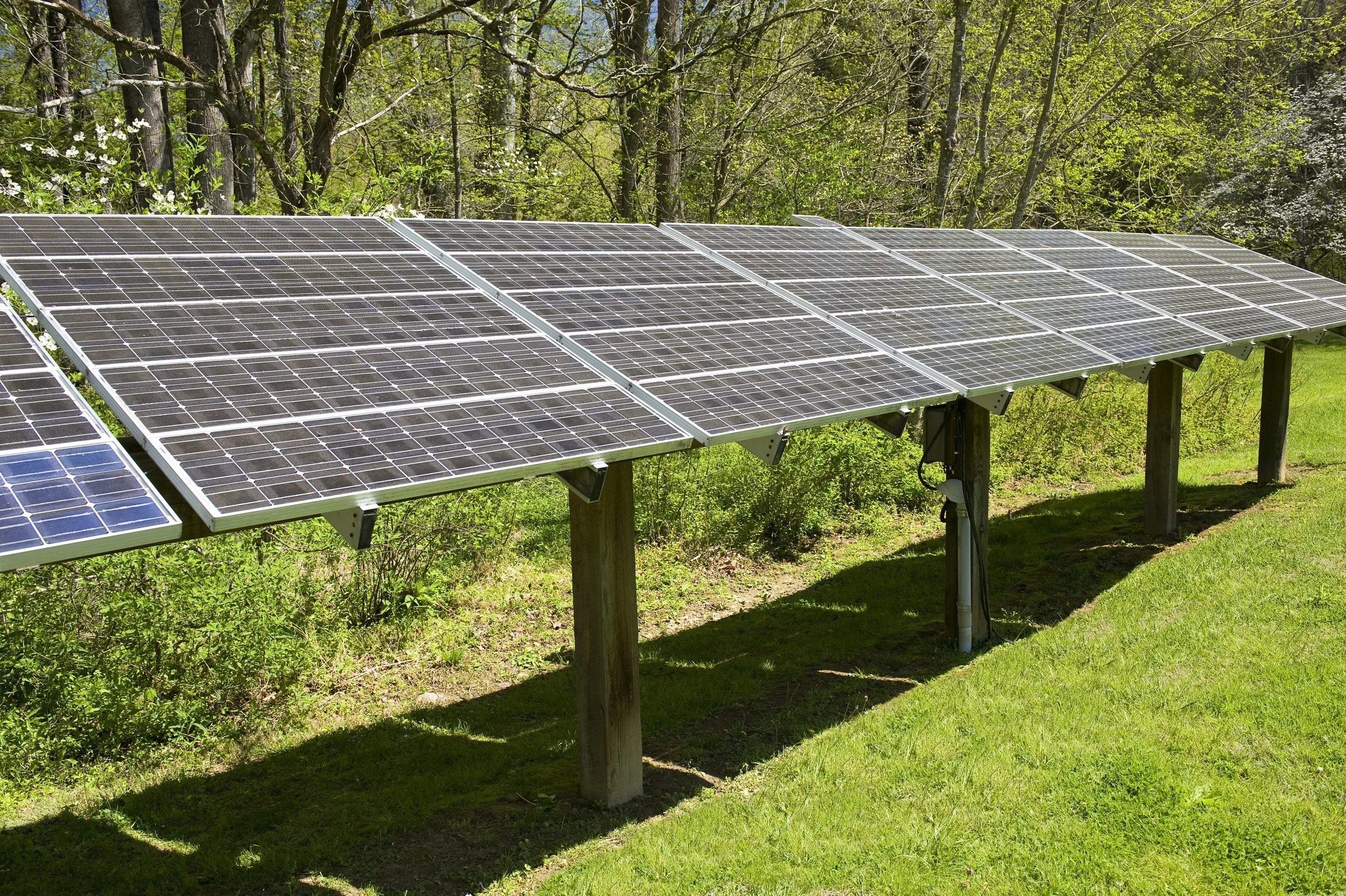Myths about Green Energy and why They're not True // Busting Common Green Energy Myths
Green energy. It’s all the hype right now amidst the climate crisis and for good reason. It’s cost-effective after installation, it’s renewable, and its carbon footprint is just a fraction of the oil, gas, and coal industries, but there are also downsides and myths, as there are to anything in regards to consumption. Today, let’s debunk some myths about green energy but also some implications of green energy.
Before we jump in, please know that I am not anti-renewable energy. Just understand that no one solution to the climate crisis is perfect and will solve the issue all on its own. While these solutions may be better than coal and oil, they are not perfect. Stay tuned till the end to learn more about what we can do to make these systems better.
Wildlife and Conservation
Renewables do pose some threat to wildlife. Hydroelectric dams can block the migration patterns of fish, solar panels take up huge amounts of space, and wind turbines have the potential to cause collisions with birds. Though, efforts have been made to change the design of wind turbines to deter birds from landing on them and placing them outside of migration paths.
A common argument is the amount of land that renewables take up and that’s a fair assessment. It is estimated that by 2035 in the US alone, about 50 million acres of land will be developed for green energy production. Though to keep things in perspective, that is the total land projected to be used for renewables but in 2018 alone, 26 million federal acres were leased to oil and gas developers.
Though, we can’t ignore that renewables do in fact take up more land than drilling for oil. But, drilling for oil has the potential to cause much more harm even though it takes up less space. Things like oil spills, fracking accidents, and of course large amounts of CO2 burned. This sounds like quite the negative impact on wildlife if you ask me.
Chris Moorman, a professor and coordinator of the Fisheries, Wildlife, and Conservation Biology program at NC State agrees that green energy poses a lot of threats to modern conservation, but that doesn’t mean we shouldn’t still opt for green energy. He notes how there are no regulations in place to prevent such accidents with wildlife and renewables. He suggests using native, pollinator-friendly plants at solar facilities to restore the area after installation and also for the government to consider conservation efforts when applying for these renewable energy grants. Things like installing solar panels on roofs of already developed land instead of installing them in wild areas.
Air Pollution
Many people argue that solar panels and wind turbines aren’t worth it because they create emissions during production. Sure, but unfortunately, we do have to rely on oil, gas, and coal right now to generate these cleaner options. One day, we will be able to make new solar panels with solar energy, making the entire process a cleaner one.
It is estimated that it takes about 200kWh to produce 1 100-watt solar panel. It may seem like a lot, but according to this estimate, one solar panel will create 365kWh in a year. So, after being operational for 200 days, it will have offset the amount of carbon it took to create it.
But what about wind turbines? Many people believe that it can take decades for wind turbines to pay themselves off in carbon and in dollars. This is due to the large cost of transportation for these large machines as well as the use of metals like iron and steel to create. It is estimated, though, that offshore wind turbines can pay off their energy debt and be carbon negative in 5-12 months while onshore wind turbines can be carbon negative in 2-24 months. So, a little longer than solar panels, but these turbines can last decades after becoming carbon neutral.
At least with renewables, there is a chance to be clean. With oil, it is dirty to extract, dirty to refine, dirty to transport, and dirty to burn. The whole process is a dirty one.
Physical Pollution
But what about these huge wind turbine blades? Where will we dispose of them once they no longer function? I get the concern, but also, we aren’t recycling oil rigs or gas stations or cars and no one seems to bat an eye at that. That being said, older wind turbine blades are not recyclable. But, new technology has arisen as this has become more of a concern to the public and newer blades are recyclable into things like computer screens and car parts. Something else to note is that there is nothing inherently toxic about disposing of turbine blades in the landfill. Though they are massive and take up a lot of landfill space and there are no laws mandating recycling. This is a big issue we see across the recycling industry. Since it is not mandatory, it is often cheaper and easier to make new plastic or paper or, in this case, wind turbine blades than it is to recycle them.
Solar panels, on the other hand, are much easier to recycle as they are made from glass, metal, and electronic components. Not only are they recyclable, but the recovery of this material is worth around $450 million. This also makes solar panels even more eco-friendly as recycling old ones into new ones requires less mining for materials.
Nuclear Waste
What’s kind of funny to me is how critics of green energy love to hate on solar and wind energy but never nuclear. To me, nuclear poses many more environmental threats than solar and wind. Nuclear energy is also considered green energy, but like coal and oil, it is not infinitely renewable at the rate at which we are harvesting it. The biggest issue with nuclear energy is radioactive waste. The waste can remain harmful to humans and wildlife for thousands of years and requires strict handling, storage, and disposal methods.
Though it is radioactive by definition, this is a relatively low level of radioactivity. When it comes to the storage of this waste, it can’t just be buried normally like our everyday trash. There is either wet or dry storage. A popular example is a dry storage cask which is basically a concrete and steel barrel that tightly seals nuclear waste. It is oftentimes buried and further protected by rocks, clay, and other materials to prevent erosion.
People will lose their jobs in oil, gas, and coal
Yes, this is true, people might possibly lose their jobs in oil, gas, and coal, but it’s not an overnight change. We are still very much a society reliant on coal and oil, so those jobs are here to stay for now. Plus, as we transition to more and more green energy, we need people in those fields, too. In 2019, 11.5 million jobs were created in the green energy space. As jobs in coal and oil may decrease over the years, the number of jobs in the green space will increase.
Not to mention, wages for clean energy jobs are around $2-10 more per hour which is about a 25% increase over the median income. Though, jobs in the oil industry are around 40% increase of the medium income. They likely get paid so much because they work is volatile. It is unpleasant work and wages and determination of who gets fired fluctuates frequently with the cost of a barrel of oil.
Someone made a great comparison in this post. “It’s like mailmen getting upset over email.” Perhaps they did when email first became a thing, but mailmen are still employed and quite necessary. Oil and coal jobs will always be around, at least in our lifetimes, but they are shrinking.
Wind turbines are noisy and an eyesore
Funny how people only say wind turbines are an eyesore but never the hundreds of oil rigs that dot the prairies of Western Texas or the oil spills in the Gulf of Mexico. Are they clunky and take up a lot of room? Sure. But again, so are oil rigs. They are both eyesores, but one is cleaner than the other.
But what about noise? In residential areas, wind turbines are placed no closer than 300m or just under ¼ mile. I’ve honestly never even seen one in a residential area, let me know if you have. But, from that distance, the turbine would produce sound at about 43 decibels. To put that in perspective, an air conditioner is about 50 decibels and a refrigerator is about 40 decibels. So, it would be a constant hum, sure, but no louder than you are already used to with all of our commonly used appliances.
Renewables are more expensive
Like with many low waste swaps, they may be more expensive up-front, sure, but over time, not only can they save you money but they can MAKE you money. Once solar panels and wind turbines are up, guess what, the wind and sun are free! Yes, they need maintained, but so do oil rigs. Not to mention, as they become more popular and widely accepted, they will become cheaper still and also become better. That means solar panels and turbines will last longer meaning fewer replacements and maintenance.
Conclusion
What all these myths and issues come down to is government intervention. We wouldn’t have to send so many turbine blades to the landfill if recycling was mandatory. We wouldn’t have to worry about conservation and solar panels if governments took conservation into consideration. The more we subsidize and transition to green energy, the less air pollution would be created by making solar panels and wind turbines
Thank you so much for reading along, this was just the surface. If you have any other myths about green energy, leave them down below and I can make a follow-up post about it. If you learned anything valuable, I would appreciate you sharing this with others to spread the word and debunk these myths.
Once again, no solution is perfect, but these are all better than contaminated air, water, and soil. If we can’t stop our overconsumption of energy, we might as well at least make it better for our own health and the health of the planet.
A last reminder, conserve energy where you can, even if you are on the green energy grid (but especially if you use dirty energy). This can be things like driving less, turning the lights off, unplugging appliances, and more. Check out this video or this blog post to learn more about easy ways to conserve energy.
Thank you again, and as always, remember that your small actions have a big impact in the long run :)
Emma









